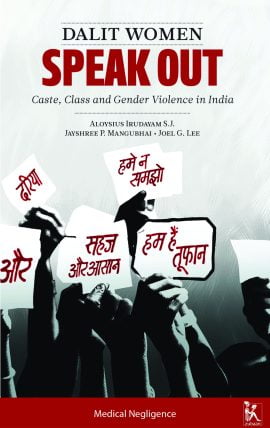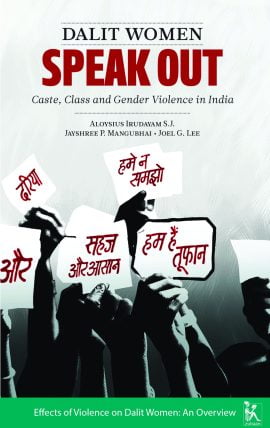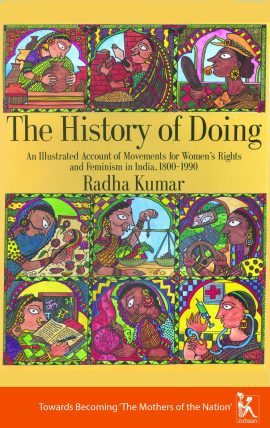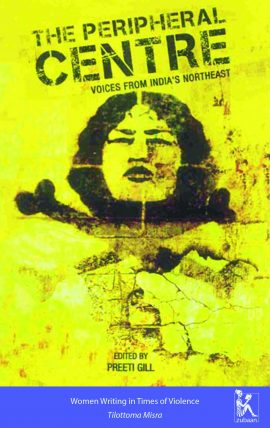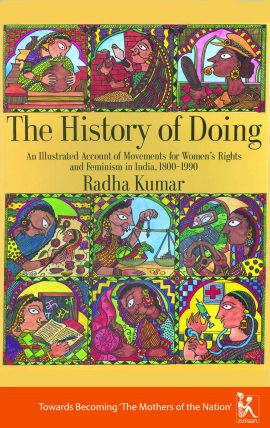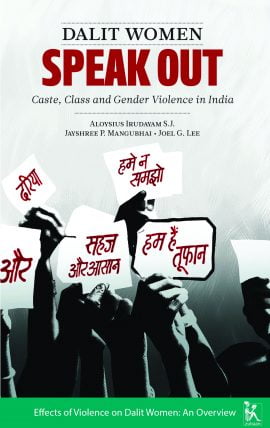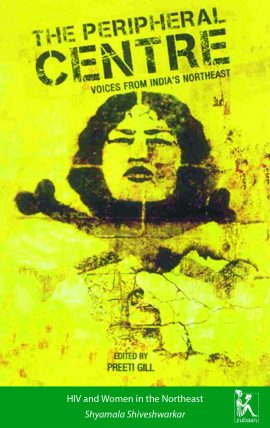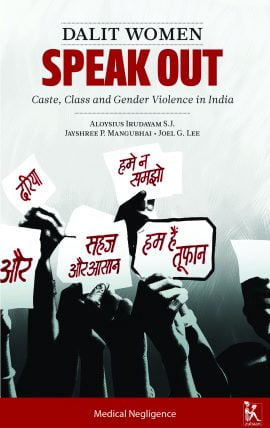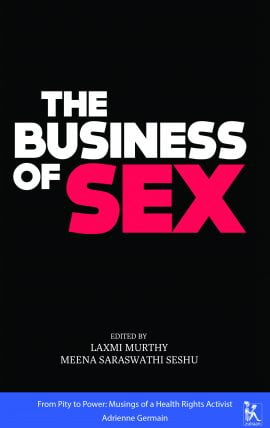No products in the cart.
Return To Shop
Log in / Sign in
Login
Register
Medical Negligence
₹ 50This essay puts forward a study, conducted across four states, that brings out the challenges faced by seventeen Dalit women when availing health services in government and private medical institutions. These accounts are placed next to interrelated and essential elements of the right to health, allowing the reader to understand the different forms of medical negligence faced by these women.The essay shows that both private and public health-care systems position Dalit women at the periphery for reasons of caste, class, and gender. The narratives cover cases where women approached medical institutions with their ailments and also situations where medical practitioners coerced them into family planning operations. The authors note that these narratives are a telling comment on the way government medical state treats Dalit women patients in contrast to non-Dalit patients. The manifestations of the negligence faced by the former group include long waiting periods, indifferent verbal responses, rude verbal responses and refusal of treatment.The authors argue that the negligence has had consequences on other spheres of these women’s lives: economic, psychological, and personal (their identities as Dalits and women), and this make them more vulnerable to discrimination. The conclusion of the essay shows the reader medical negligence from a systemic angle, by examining the social and political positions of the medical personnel, their value systems, geographical settings and underlying power equations.
Effects of Violence on Dalit Women: An Overview
Rated 4.00 out of 5
₹ 50
Writing in Dalit Women Speak Out, authors Irudayam, Mangubhai and Lee situate this essay within brahmanical patriarchal discourse of dishonour and blame, which stigmatizes Dalit women who are victim-survivors of violence. Their interviews with five hundred Dalit women investigate the nature and forms of violence faced by the women, and bring to light not only instances of violence within Dalit households, but also the overwhelming number of cases that relate to rapes by male members of dominant castes.These personal narratives articulate the dilemmas that confront women when facing themselves and society after being subjected to violence. The fear generated following any type of violence, and the impunity with which much of the violence occurs, all contribute to changes in the victim-survivors’ social interactions and sense of belonging to their families and communities. The authors focus on both the immediate and long-term consequences of violence on women vis-à-vis their right to health, dignity, life and security. With the help of the study they demonstrate how short-term physical injuries have the capacity to inflict long-term mental suffering, which can exacerbate feelings of helplessness and fear of further violence. The lives of Dalit women become conditioned to violence rather than freedom, which can lead to the curtailment of women’s mobility in public spaces.
Add to cart
Towards Becoming ‘The Mothers of the Nation’
₹ 50This chapter from The History of Doing focuses on the late nineteenth century and early twentieth century, when social reform movements in India were beginning to show results and women were becoming more visibly present in the public sphere. Kumar provides a thematic history of the women’s movement before independence, beginning with focusing on the 1889 session of the Indian National Congress in Bombay where ten women delegates attended the assembly for the first time.Using photographs and a wide variety of print sources from books to newspapers, Kumar looks at how women’s issues were raised and how women were involved in addressing these. Prostitution was one of the first such issues, referred to by the Indian National Congress at their 1888 session. The essay discusses at length the steps taken to regulate prostitution by the British in India and the level of support this received from reformers and moderate nationalists. The turn of the century saw a proliferation of homes for widows, with schemes to train widows as teachers. The Swadeshi movement in Bengal during this time period marked the beginning of women’s participation in national activities on a larger scale.Kumar offers detailed portraits on the lives of some of the women involved in the above movements and reforms like Swarnakumari Debi, her daughter Sarala Debi Ghosal and Bhikaiji Cama. Kumar also observes that for some of these women, the bid for personal independence grew to be subsumed in a quest for national independence, but that they also returned to their homes without regret when the moment of crisis passed. A large number of the women written about in the essay were writers, both reformists and revolutionaries.
Enlightenment Through Literature
₹ 50
This essay is a historical overview of Dalit literature, focusing on the contribution of women writers. The authors Urmila Pawar and Meenakshi Moon show how the Dalit movement gained momentum with the rise of Dalit centric newspapers and literary societies, which gave a voice to the Dalit people. Led by Babasaheb Ambedkar, this literary movement was strengthened through talks, discussions, analysis of folk songs, and by spreading literacy and encouraging research. By the 1960s, Dalit writers had created a huge collection of short stories, poems, novels, autobiographies and analytical pieces. The authors focus on the gradual increase of female voices and perspectives in Dalit writing – on topics ranging from religious customs like funerary rites, birth control, to mixed marriages. Some women included larger criticisms of patriarchal societal norms in their writing, advocating for equality. They were especially emphatic about the need for education, urging other Dalit women to take initiative by educating their daughters. The essay also looks at writings on Ambedkar himself, and on Buddhism, the religion that Ambedkar heavily propounded, and later embraced. By providing excerpts of their writings, the essay shows how the women often had differing points of view, leading to healthy discussions and critiques. Appreciating these works for their literary merits as well as social significance, the authors suggest that they helped people understand and appreciate their own history, and facilitated the spread of radical ideas of identity and self-worth.
Add to cart
Women Writing in Times of Violence
₹ 50
This essay uncovers how the writings of women have emerged as forms of protest in Assam, a region torn by political violence and prolonged militancy. For Tilottoma Misra, these voices are doing more than simply responding to a need to represent the marginalised; they are attempting to depict the trauma that the women experience in their lives. In discussing the power of the narrative, Misra lays out those aspects of traumatic events that a literary discourse can grasp more expansively than a strictly historical narrative.Through a discussion of women's writing in the last ten years, the essay explores ways in which women have been affected by violence committed by both the armed forces as well as the militants. Questions of representations do figure prominently in the essay, and the author refers to short stories and poems to illustrate the experience of living through traumatic incidents and moments of devastation. The texts also reveal a desire to create subjects who are able to rise above their immediate political locations and see suffering in a more universal light.Written by women during times of conflict, these stories and poems help explore nuances of the ways in which one's psyche is affected by the same. With a population facing discoveries of mass graves and an increasing breakdown of basic civic amenities, Misra poses urgent questions as to the role of the writer in such difficult times.
Add to cart
Enlightenment Through Literature
₹ 50
This essay is a historical overview of Dalit literature, focusing on the contribution of women writers. The authors Urmila Pawar and Meenakshi Moon show how the Dalit movement gained momentum with the rise of Dalit centric newspapers and literary societies, which gave a voice to the Dalit people. Led by Babasaheb Ambedkar, this literary movement was strengthened through talks, discussions, analysis of folk songs, and by spreading literacy and encouraging research. By the 1960s, Dalit writers had created a huge collection of short stories, poems, novels, autobiographies and analytical pieces. The authors focus on the gradual increase of female voices and perspectives in Dalit writing – on topics ranging from religious customs like funerary rites, birth control, to mixed marriages. Some women included larger criticisms of patriarchal societal norms in their writing, advocating for equality. They were especially emphatic about the need for education, urging other Dalit women to take initiative by educating their daughters. The essay also looks at writings on Ambedkar himself, and on Buddhism, the religion that Ambedkar heavily propounded, and later embraced. By providing excerpts of their writings, the essay shows how the women often had differing points of view, leading to healthy discussions and critiques. Appreciating these works for their literary merits as well as social significance, the authors suggest that they helped people understand and appreciate their own history, and facilitated the spread of radical ideas of identity and self-worth.
Add to cart
Towards Becoming ‘The Mothers of the Nation’
₹ 50This chapter from The History of Doing focuses on the late nineteenth century and early twentieth century, when social reform movements in India were beginning to show results and women were becoming more visibly present in the public sphere. Kumar provides a thematic history of the women’s movement before independence, beginning with focusing on the 1889 session of the Indian National Congress in Bombay where ten women delegates attended the assembly for the first time.Using photographs and a wide variety of print sources from books to newspapers, Kumar looks at how women’s issues were raised and how women were involved in addressing these. Prostitution was one of the first such issues, referred to by the Indian National Congress at their 1888 session. The essay discusses at length the steps taken to regulate prostitution by the British in India and the level of support this received from reformers and moderate nationalists. The turn of the century saw a proliferation of homes for widows, with schemes to train widows as teachers. The Swadeshi movement in Bengal during this time period marked the beginning of women’s participation in national activities on a larger scale.Kumar offers detailed portraits on the lives of some of the women involved in the above movements and reforms like Swarnakumari Debi, her daughter Sarala Debi Ghosal and Bhikaiji Cama. Kumar also observes that for some of these women, the bid for personal independence grew to be subsumed in a quest for national independence, but that they also returned to their homes without regret when the moment of crisis passed. A large number of the women written about in the essay were writers, both reformists and revolutionaries.
A Life of Peace and Dignity
₹ 50Written by Farida Abdulla, this essay is a personal account of her experience in Kashmir—before, during and after the enforcement of centralized government rule over the area. Born and brought up in Kashmir, she reflects on the seething resentment of people treated like more border territory than citizens of the country.Through the essay Adulla looks at ‘what’ instead of ‘why’; she does not delve into the historical context of the rule, but focuses on the effects of such a rule on the local population. By narrating two incidents strongly embedded in her mind, she attempts to show the complexity of the situation, and the pain and confusion of the people living there. Trapped between the government- sanctioned armed forces and the ideological militant resistors, Kashmiri people are often unable to distinguish between the two groups, and are in constant fear for their lives.She raises questions about security and autonomy, especially in the case of women. While the struggle of women in India has been a long and arduous one, their status becomes even more unstable in a region fraught with suppression and violence. Female voices are either lost in the larger masculine struggle, or are subsumed in the singular narrative of rape and sexual abuse. Abdulla hopes for a safe space for people divided by religion and gender to resolve their conflicts and live in peace and dignity.
Effects of Violence on Dalit Women: An Overview
₹ 50
Writing in Dalit Women Speak Out, authors Irudayam, Mangubhai and Lee situate this essay within brahmanical patriarchal discourse of dishonour and blame, which stigmatizes Dalit women who are victim-survivors of violence. Their interviews with five hundred Dalit women investigate the nature and forms of violence faced by the women, and bring to light not only instances of violence within Dalit households, but also the overwhelming number of cases that relate to rapes by male members of dominant castes.These personal narratives articulate the dilemmas that confront women when facing themselves and society after being subjected to violence. The fear generated following any type of violence, and the impunity with which much of the violence occurs, all contribute to changes in the victim-survivors’ social interactions and sense of belonging to their families and communities. The authors focus on both the immediate and long-term consequences of violence on women vis-à-vis their right to health, dignity, life and security. With the help of the study they demonstrate how short-term physical injuries have the capacity to inflict long-term mental suffering, which can exacerbate feelings of helplessness and fear of further violence. The lives of Dalit women become conditioned to violence rather than freedom, which can lead to the curtailment of women’s mobility in public spaces.
Add to cart
HIV and Women in the Northeast
₹ 50
'HIV and Women in the Northeast' explores the feminization of the HIV/AIDS epidemic in the northeastern states of India. Shyamala Shiveshwarkar illustrates the reason behind the growing epidemic in the Northeast—that the virus has been extending its reach with high-risk sub populations like injected drug users (IDUs) as well as making inroads with the general population—and focuses on how it is impacting women detrimentally. The region has seen the HIV/AIDS epidemic primarily driven by IDUs; states are combating the double dilemma of drugs and AIDS. Transmission of the virus from IDUs to spouses, sexual partners and children has also been established, which has led to statistical increases in sero-positivity. Given that the “Northeast” is a homogenizing misnomer, the author uses tracking mechanisms to outline how differences in socio-economic and anthropological dynamics contribute to different prevalence rates and changes in infected populations over time.Shiveshwarkar establishes and elaborates on the critical linkages between drugs, violence, and gender inequalities at the individual, family, and societal levels to establish women’s increasing vulnerability to HIV/AIDS. She asserts that regardless of whether they are affected or infected, women are being forced to take on a greater share of the socio-economic and psychological burdens of stigma and discrimination, violence, caring for the sick and providing for their families. Many women, including young girls who are forced to drop out of school, are made to work to cover the medical expenses of sick spouses or to repay debts. The author takes care to outline the intersection of these vulnerabilities with the political insurgency in these states and explores the problems with existing treatment and care of HIV/AIDS—focusing primarily on its inadequacy and male-centricism, which severely limits women’s access to prevention and careIn her conclusion, Shiveshwarkar, insists on the need to recognize that accessibility is a web of socio-economic, cultural and physical geographical factors: for women, the presence of services alone is insufficient. The author argues that what is needed is holistic reform which includes addressing the drug problem in these states, demanding state-sponsored medical interventions and gender sensitive medical environments.
Add to cart
Medical Negligence
₹ 50This essay puts forward a study, conducted across four states, that brings out the challenges faced by seventeen Dalit women when availing health services in government and private medical institutions. These accounts are placed next to interrelated and essential elements of the right to health, allowing the reader to understand the different forms of medical negligence faced by these women.The essay shows that both private and public health-care systems position Dalit women at the periphery for reasons of caste, class, and gender. The narratives cover cases where women approached medical institutions with their ailments and also situations where medical practitioners coerced them into family planning operations. The authors note that these narratives are a telling comment on the way government medical state treats Dalit women patients in contrast to non-Dalit patients. The manifestations of the negligence faced by the former group include long waiting periods, indifferent verbal responses, rude verbal responses and refusal of treatment.The authors argue that the negligence has had consequences on other spheres of these women’s lives: economic, psychological, and personal (their identities as Dalits and women), and this make them more vulnerable to discrimination. The conclusion of the essay shows the reader medical negligence from a systemic angle, by examining the social and political positions of the medical personnel, their value systems, geographical settings and underlying power equations.
From Pity to Power: Musings of a Health Rights Activist
₹ 50
For this essay, Adrienne Germain draws from her professional life, especially her interactions with female sex workers in the Indian subcontinent. The author details how action around sex workers is often centred on “rehabilitation” and “relocation” as though all women in sex work had been “forced” into it by circumstance. Germain believes that this position deprives these women of their agency and fails to respect their autonomy as individuals.The central theme of the essay is the difference of opinion among feminists, and between some feminists and the sex workers’ movement, on if sex work is or can be an autonomous choice by women, or is always and only a form of violence and exploitation of women. Another important theme dealt with in the essay is the interface of sex work and HIV, where policy makers often see sex workers only as a vector of the disease with programmatic interventions often not recognizing these workers as agents of change themselves. She mentions her engagement with several non-governmental organizations in India that led her to realize the need to establish and implement sex workers’ labour rights.The author also discusses her positionality and mentions the emotive barriers or discomforts that still remain for her around sex work, which she attributes to differences in life experience. She describes these “emotive barriers” as stemming from the fact that she cannot fully imagine the choices, as much as she respects their right to sex work. In addition to general opposition to defending the rights of women in sex work, she discusses how many women perceive these sex workers as a direct threat to themselves, to their marriages, or to a social order in which they feel “safe”. The author states that in the broadest sense, both feminist and sex workers’ movement are founded on the commitment to women’s autonomy especially control of their bodies. She concludes with a call for solidarity and for women to unite across diversities to mitigate the challenges around sex work.
Add to cart
Contact Us
© Zubaan 2019. Site Design by Avinash Kuduvalli.
Payments on this site are handled by CCAvenue.

